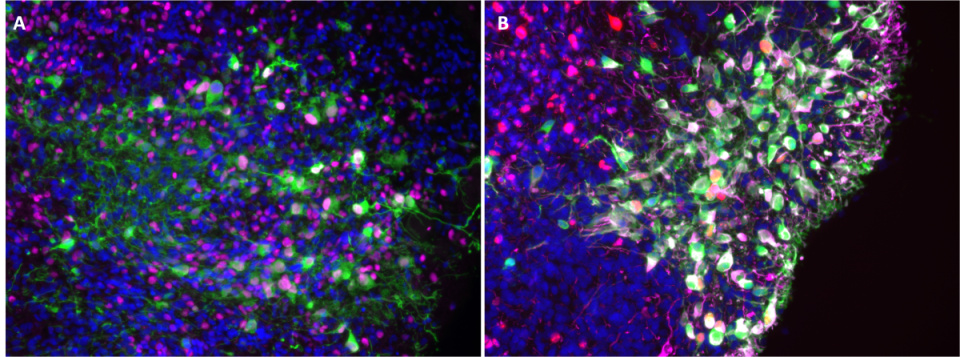Current DRP and CEP Awardees

Below is a list of DRP and CEP awardees. This page is generally updated annually as new awards are announced
DRP Awardees
Daniel Kamei, PhD
Professor, Bioengineering
Won Kim, MD
Assistant Professor, Neurosurgery
2023–2024
Barcode lateral-flow immunoassay for detection of circulating tumor cells in cerebrospinal fluid for identification and treatment of leptomeningeal disease
Leptomeningeal disease (LMD) is a devastating disease with very low survival rates. Accordingly, there is a need to quantify circulating tumor cells (CTCs) in the cerebrospinal fluid (CSF) of patients to enable rapid diagnosis of LMD as well as real-time monitoring of the efficacy of LMD treatments. Methods have been developed to quantify CTCs and leukocytes by recognizing that they both express the epithelial cell adhesion molecule (EpCAM) and that leukocytes also express CD45. These approaches unfortunately require equipment and extensively trained personnel, and therefore cannot be used at the point of care (POC). The lateral-flow immunoassay (LFA) is a POC diagnostic, but it is unfortunately limited to a yes/no answer. We therefore propose to develop a POC kit based on a barcode LFA that will enable hospital staff to determine the concentrations of cells expressing EpCAM and CD45, where the difference in these concentrations will yield the concentration of CTCs.
Albert Lai, MD, PhD
Professor, Neurology
2023–2024
Investigation of DNA Methylation Editing for Glioblastoma Therapy
Despite advances in treatment and molecular understanding of gliomas, outcomes for patients diagnosed with glioblastoma have not improved significantly. To address this area of unmet need, we will establish CRISPR-based methylation editing as a novel approach to the treatment of gliomas. Epigenetic alterations in the form of DNA methylation are extremely common in gliomas. In fact, methylation of the DNA repair enzyme, MGMT, occurs in ~40% of glioblastoma patients and is associated with significantly increased treatment benefit to standard-of-care chemotherapy. Conversely, 60% of glioblastoma patients lack MGMT methylation and appear to derive only limited treatment benefits. We hypothesize that conversion of unmethylated MGMT glioblastoma to methylated MGMT glioblastoma will sensitize these tumors to chemotherapy, and if so, will represent a significant improvement in outcome for glioblastoma patients. Such a strategy is now possible with the advent of CRISPR-based genome editing which we propose to use to methylate unmethylated MGMT tumors. The goal of this proposal is to adapt ‘state of the art’ CRISPR genome editing technology to efficiently perform methylation editing in glioma cells and to combine this with nanoparticle based delivery into brain tumors. We will pursue the following Specific Aims: Aim 1: To optimize targeted methylation of MGMT to enhance TMZ sensitivity in GBM cells. Aim 2: To optimize delivery of the methylation editing system in vivo. The impact of completion of these aims will be to develop, characterize, and deliver CRISPR-dCas9 methylation editing to silence the DNA repair gene, MGMT, as a therapeutic option for GBM.
Anthony Wang, MD
Assistant Professor, Neurosurgery
2023–2024
Targeting alternative mRNA processing for TCR discovery in diffuse hemispheric glioma, H3 G34-mutant pediatric high-grade glioma
Two main pediatric high-grade glioma (pHGG) subtypes are distinguished by somatic H3-3A gene mutations, each associated with distinct epigenetic dysfunctions contributing to their developmental biology. Dysregulated RNA splicing appears to be an important oncogenic feature characterizing the newly-recognized diffuse hemispheric glioma, H3 G34-mutant (DHG), and is widespread in various cancer types. A major mechanism for generating protein diversity in cancer cells, dysregulated mRNA processing (AS) is a promising but largely untapped source of anti-cancer targets.
We are pursuing a collaborative immunotherapeutics discovery program that exploits AS as a source of cancer-specific epitopes for T cell receptor (TCR) therapy of pHGG. Our strategy to develop TCR based therapies for pHGGs relies on unmasking the hidden diversity of cancer proteomes produced by AS. AS generates incredible protein diversity in cancer cells and represents a promising but largely untapped source of anti-tumor targets. We hypothesize that the mutations that characterize DHG uniquely create tumor-associated antigens through dysregulated mRNA processing. Our objective is to identify such neoantigens, and to develop TCR-engineered cytotoxic T cells that can recognize and bind them.
Our studies will identify and verify the validity of targets for anti-tumor vaccination in an important subset of pediatric cancers. Successful completion will inform a clinical trial in development, which will offer a first-in-kind analysis of the intratumoral effects of anti-tumor vaccination in pediatric brain cancer.
CEP Awardees
Jingwen Yao, PhD
Assistant Professor, Radiological Sciences
2023–2024
A pilot study of using multi-nuclei microstructural MRI for differentiating radiation necrosis and recurrent tumor in brain metastases
Brain metastases are a common complication of systemic cancer and a significant cause of morbidity and mortality. Current imaging techniques have limited ability to differentiate recurrent brain metastases (rBM) from radiation necrosis (RN), leading to challenges in treatment planning and patient management. The objective of this study is to determine the feasibility of using a combination of diffusion-relaxation correlation spectrum imaging (DR-CSI) and sodium imaging for differentiating RN and rBM. Our central hypothesis is that the proposed dual-nuclei imaging method can detect microstructural characteristics associated with viable tumor tissue and treatment-induced necrosis that will facilitate the discrimination of the two conditions. To attain this goal, we propose to recruit 30 patients with radiographic progression of brain metastases scheduled to undergo laser interstitial thermal therapy (LITT) or surgical resection. The proposed dual-nuclei imaging method will be acquired in addition to clinical sequences prior to the procedure. In Aim 1, we will identify the microstructural MRI features of histologically confirmed rBM and RN. We hypothesize to observe differential imaging characteristics, with a higher sodium intensity and a larger component with restricted diffusion and low T2 in RN compared to rBM. The imaging features will also be evaluated for their ability to differentiate the two conditions using ROC analysis. In Aim 2, we will collect image-guided biopsy tissues to validate the association between microstructural MRI features and histological characteristics. Pearson correlation will be used to correlate the imaging characteristics with tissue cellularity, extracellular space fraction, and the percentage of tumor and necrotic tissue.